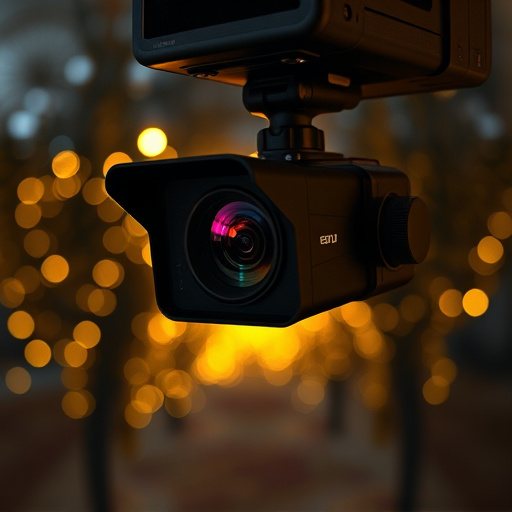Setting up a remote viewing nanny surveillance system demands careful consideration of legal and ethical boundaries. It involves understanding regional privacy laws, respecting individual privacy, obtaining consent, and ensuring transparency. Hardware selection includes high-definition cameras with infrared capabilities and wireless configurations for flexibility. Secure network connectivity is crucial with encrypted connections, strong passwords, and VPN access. Discreet camera placement and robust encryption protect private spaces and data from unauthorized access, maintaining system security and reliability.
“Uncovering the intricacies of covert camera network installation, this guide delves into essential best practices for those employing remote viewing technologies. From legal and ethical considerations surrounding remote viewing to selecting the ideal hardware for a nanny surveillance system, we navigate the landscape of privacy and security. Learn how to secure network connectivity, maintain robust encryption, and protect sensitive data in your remote monitoring setup, ensuring peace of mind without compromising ethics.”
- Understanding Legal and Ethical Considerations for Remote Viewing
- Choosing the Right Hardware for Nanny Surveillance System
- Securing Network Connectivity for Covert Camera Installation
- Maintaining Privacy and Security in Remote Monitoring Setup
Understanding Legal and Ethical Considerations for Remote Viewing
When setting up a remote viewing nanny surveillance system or any covert camera network, it’s paramount to navigate the legal and ethical landscape meticulously. Different jurisdictions have distinct laws governing privacy rights, with many prohibiting the installation of cameras in areas where individuals expect a reasonable expectation of privacy, such as bathrooms and bedrooms. Understanding these legal parameters is crucial to avoiding potential civil or criminal liabilities.
Ethical considerations also play a significant role. The use of remote viewing systems should always respect the privacy and dignity of individuals being monitored. It’s essential to obtain explicit consent from all relevant parties, especially in domestic settings, and ensure that access to the footage is restricted only to authorized personnel for legitimate purposes. Transparency about the surveillance system’s existence can foster trust and mitigate potential ethical concerns.
Choosing the Right Hardware for Nanny Surveillance System
When setting up a nanny surveillance system, selecting the appropriate hardware is paramount for effective remote viewing. The right combination of cameras, recording devices, and monitoring software ensures clear and continuous observation. High-definition (HD) cameras with infrared capabilities offer superior night vision, crucial for keeping an eye on your loved ones even in low-light conditions.
Consider a network of wireless cameras for ease of installation and flexibility. These can be discreetly positioned around the house, allowing for remote viewing via a secure internet connection. A robust recording device with ample storage ensures uninterrupted monitoring, while user-friendly software enables easy access to live feeds and recorded footage from anywhere at any time, offering peace of mind for busy parents or caregivers.
Securing Network Connectivity for Covert Camera Installation
When setting up a covert camera network, ensuring secure network connectivity is paramount. It’s crucial to utilize encrypted connections and robust authentication protocols to protect sensitive data transmission. This involves implementing strong passwords and enabling encryption standards like AES (Advanced Encryption Standard) for all devices within the network. Additionally, setting up a Virtual Private Network (VPN) can provide an extra layer of security, especially when accessing cameras remotely for nanny surveillance or other purposes.
A reliable Remote Viewing Nanny Surveillance System should allow for seamless access from anywhere, but this accessibility must be balanced with security measures. By integrating these practices, you create a safe and effective infrastructure for monitoring, ensuring that the network remains secure while providing the flexibility to view live feeds remotely as needed.
Maintaining Privacy and Security in Remote Monitoring Setup
When setting up a remote viewing nanny surveillance system, maintaining privacy and security is paramount. It’s crucial to ensure that all cameras are discreetly installed, with no visible indicators of their presence. This includes using stealthy mounting techniques, such as hiding cameras behind furniture or in decorative items, to protect the privacy of individuals being monitored. Additionally, implementing robust encryption protocols for all data transmission ensures that video feeds cannot be easily intercepted or accessed by unauthorized parties.
To further fortify security, consider employing dynamic IP addresses and regularly updating firmware to patch any known vulnerabilities. Using strong, unique passwords for each camera and access point is also essential. Regular monitoring of system logs can help detect any suspicious activity, while keeping software up-to-date ensures that the network remains resilient against emerging threats. By adhering to these best practices, remote viewing nanny surveillance systems can maintain both privacy and security in their monitoring setup.
When setting up a covert camera network, adhering to best practices ensures both effective monitoring and legal compliance. By understanding the ethical implications of remote viewing, selecting suitable hardware for your nanny surveillance system, securing reliable network connectivity, and prioritizing privacy and security measures, you can create a robust and discrete monitoring solution. Remember, responsible implementation of these best practices fosters trust and safeguards sensitive environments.
